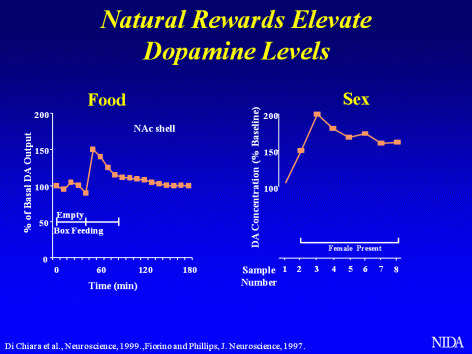Research in neurobiology and the nature of the brain helps us understand addiction.
The brain reacts when stimulated. Experiences outside the brain, change what happens inside the brain. The neurotransmitter dopamine flows into the nucleus accumbens. The result? Pleasure. The brain records the experience. It has created a “reward pathway.”
Dopamine motivates action. This brain chemical that creates desire. For starving animals, dopamine makes the brain a vehicle for seeking food. For addicts, it sends the brain hunting for alcohol, or drugs, or behavioral stimulation associated with food, sex or money.
Its intense signal narrows the field of options, focusing the desire on one particular reward. Whether in the service of food, alcohol, love, or gambling — dopamine creates neural footprints that helps me return to what once gave me pleasure.
As I follow those footprints, over time they harden and become, first a path, then a highway to a highly specialized – and limited – pot of gold.
Almost any pleasurable experience can become addicting. But more powerful stimulants are particularly addicting. The higher dopamine release sets the addiction trap.
At the level of brain chemistry, the external experiential pattern of stimulation and return, establishes in the brain a systemic, reinforcing chemical cycle that slowly takes over my ability to make decisions that would deny my brain the chemical process by past behavior has established. I become enslaved to my own brain.
Just as external stimulation established the neuropathways of addiction in the first place, new external experiences must establish neuropathways of recovery.
The work of addiction treatment helps the addict pursue new, brain-healthy experiences. Slowly the brain will heal.

